Many homeowners opt to use dyed mulch in their yards to achieve their desired appearance. Aesthetically, this type of mulch can complement your landscaping with attractive coloring. Colored mulch typically comes in black, red, brown, and green.
However, while you might prefer the look of colored mulch, there are many risks associated with using this type of mulch instead of natural, more sustainable (and often more affordable) options. Learn why homeowners should steer clear of this product and explore healthier alternatives you can use in your yard.
Reasons to Avoid Dyed Mulch
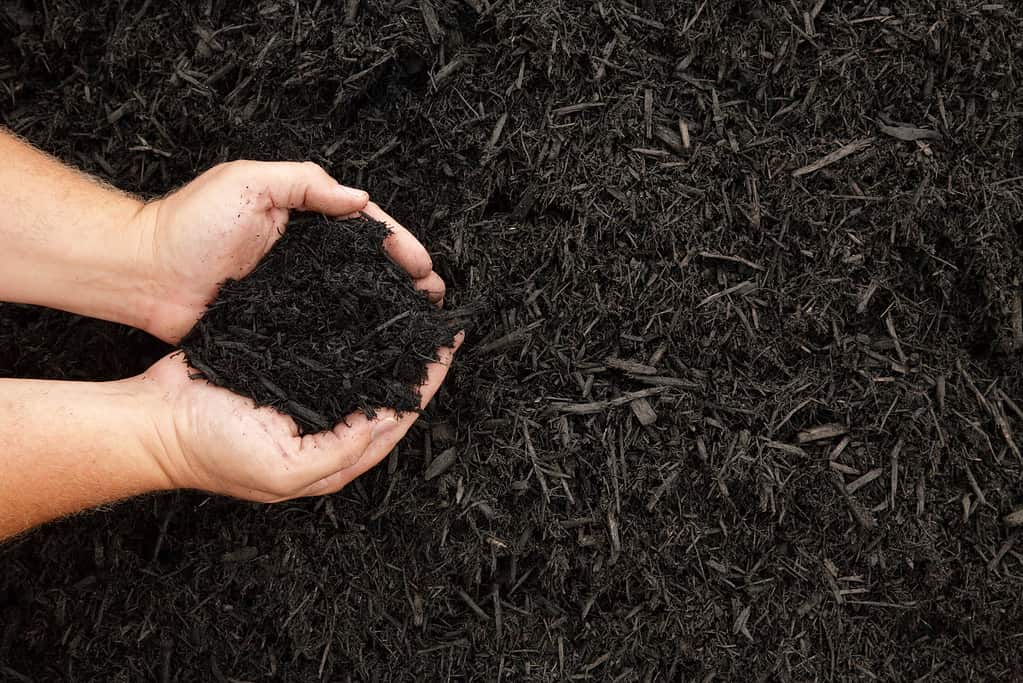
Hands displaying a handful of dark wood bark mulch
©iStock.com/witmerphotography
Colored mulch might be popular, but that doesn’t make it safe. Here are some important reasons to never put dyed mulch in your yard.
Dyed Mulch Does Not Break Down

©OzCameraman/Shutterstock.com
Mulch is supposed to enrich the soil in which your plants grow. However, because dyed mulch does not break down, it actually spreads its artificial dye and contaminants into the soil. This can cause harm to or even kill your plants.
Other mulches break down specifically to add nutrients to the soil. Colored mulch achieves the opposite effect: it damages the soil’s ecosystem and kills off the necessary bacteria, insects, earthworms, and organic matter that would contribute to your plant’s health.
Dyed Mulch Steals Nitrogen From Soil
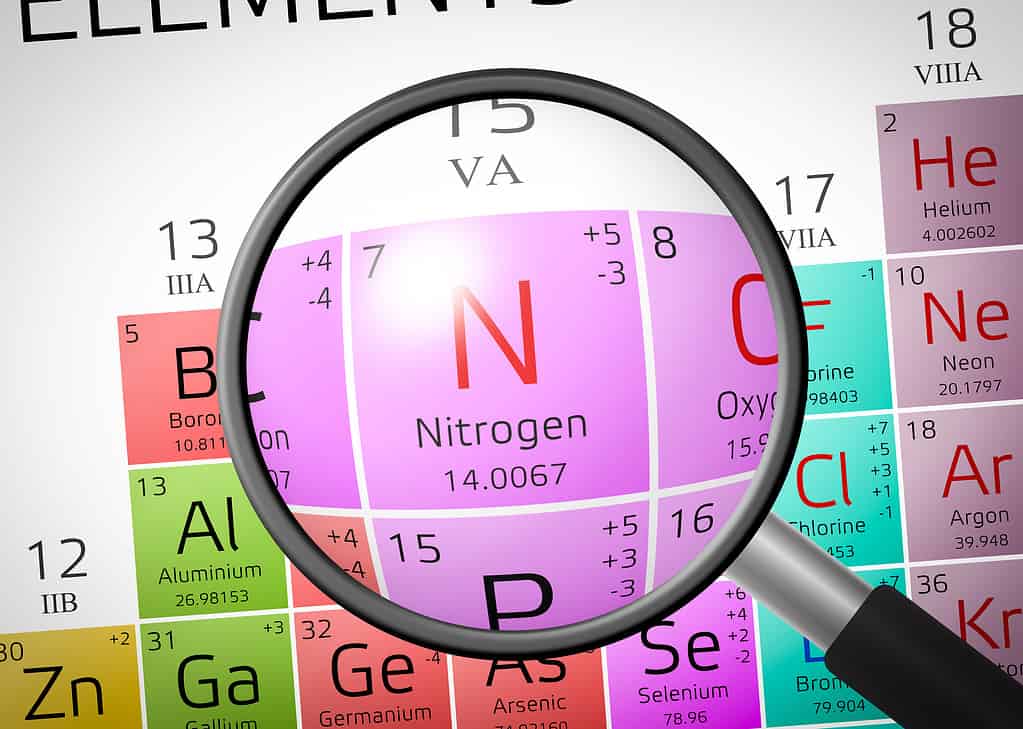
Nitrogen from Periodic Table of the Elements with magnifying glass
©andriano_cz/iStock via Getty Images
Nitrogen is an important nutrient in healthy soil that helps plants grow and thrive. However, colored mulch competes with plants for the nitrogen in their soil. This is especially harmful to young plants that require tons of nitrogen to grow. If you’re using dyed mulch, you might witness your plants struggling to grow or stay alive due to a lack of nitrogen.
Dyed Mulch Can Cause Harm to Humans, Animals, and Other Living Organisms

©Mariia Boiko/Shutterstock.com
There’s a reason you should wear gloves when handling dyed mulch: it often contains contaminants (such as chromium, copper, lead, formaldehyde, and arsenic) that are harmful to all living organisms. Especially if you have small children or pets who play in your yard, you should avoid using colored mulch at all costs.
Some Dyed Mulch Comes From Questionable Sources
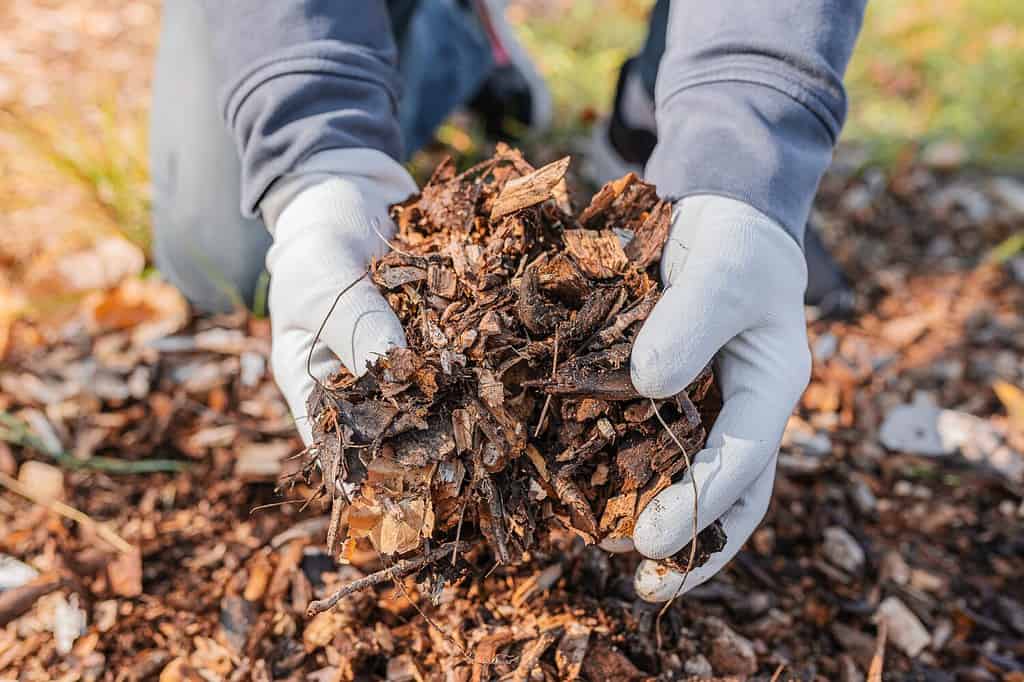
Dyed mulch can be toxic to your plants and soil. Thankfully, there are more sustainable alternatives.
©larisa Stefanjuk/Shutterstock.com
In many cases, colored mulch is made from recycled wood waste, construction waste, or demolition waste, often including old pallets or even pressure-treated CCA lumber. The mulch is often treated with dangerous substances before being turned into mulch.
Most colored mulch are dyed with carbon-based dyes and iron oxide-based dyes. While these aren’t considered toxic, the chips can still carry contaminants that harm the soil. At the very least, they don’t provide any sort of nutrients to the plants.
Alternatives to Dyed Mulch

©Jon Rehg/Shutterstock.com
While colored mulch might be aesthetically pleasing for your yard, there are healthier options that will help your plants thrive.
Pine Needles

Pine needles
©National Institute of Korean Language/CC BY-SA 2.0 KR/ – Original / License
Many homeowners use pine needles as natural mulch for their landscaping. Pine needles insulate plants, keep the soil moist, prevent weeds from growing, and feed the soil with rich nutrients.
Natural Double- or Triple-processed Mulch
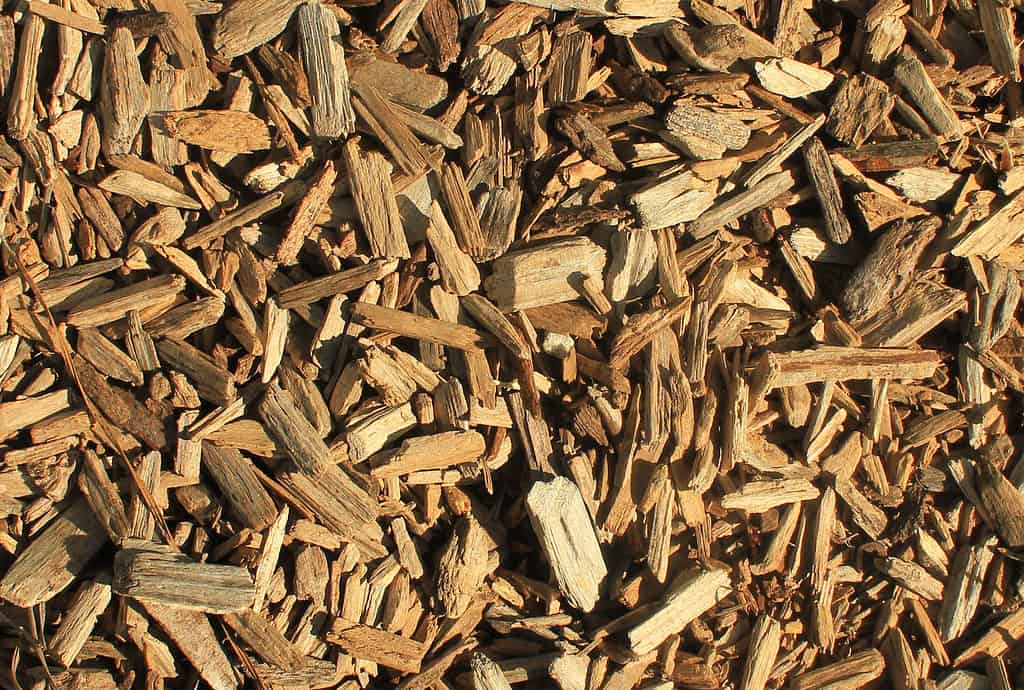
Typically made from ground tree bark and wood, double- and triple-processed mulch helps to keep your plants protected from weed overgrowth. Additionally, these types of mulch break down and provide nutrients to your soil, helping your plants thrive.
Cedar Mulch
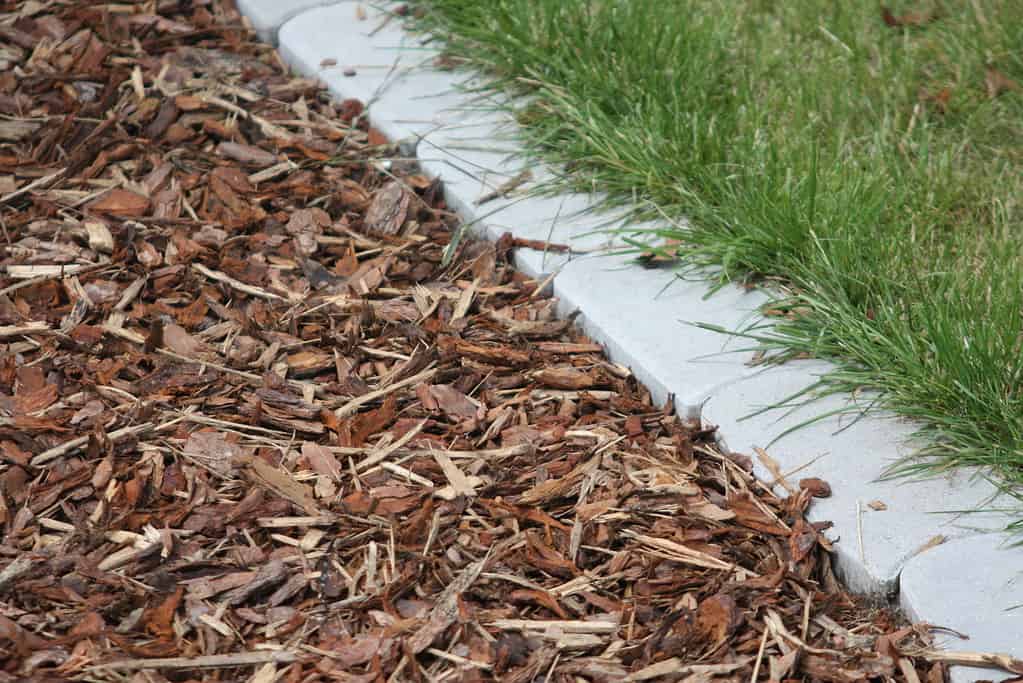
Natural cedar mulch provides a nutrient-dense environment for growing plants.
©Apostoloff / GNU GENERAL PUBLIC LICENSE – Original / License
Made of clippings from cedar trees, cedar mulch provides a healthy and nutrient-dense environment for plants to grow. Because of its bright coloring, it can make a great alternative to dyed mulch. It also keeps weeds under control and doesn’t require much maintenance. However, due to its natural bug-repelling chemicals, this type of mulch can fight off some helpful insects.
Pine Bark

Pine bark mulch is a nice alternative to dyed mulch.
Pine bark mulch is a long-lasting mulch with a dark red/brownish coloring — an appealing natural alternative to dyed mulch. It helps insulate the soil, keeping it moist and protecting plants from extreme temperatures. It adds key nutrients and aluminum to the soil, promoting healthy growth.
However, though this mulch is lightweight and easy to work with, it is often known to wash away with rain and wind.
Shredded Leaves
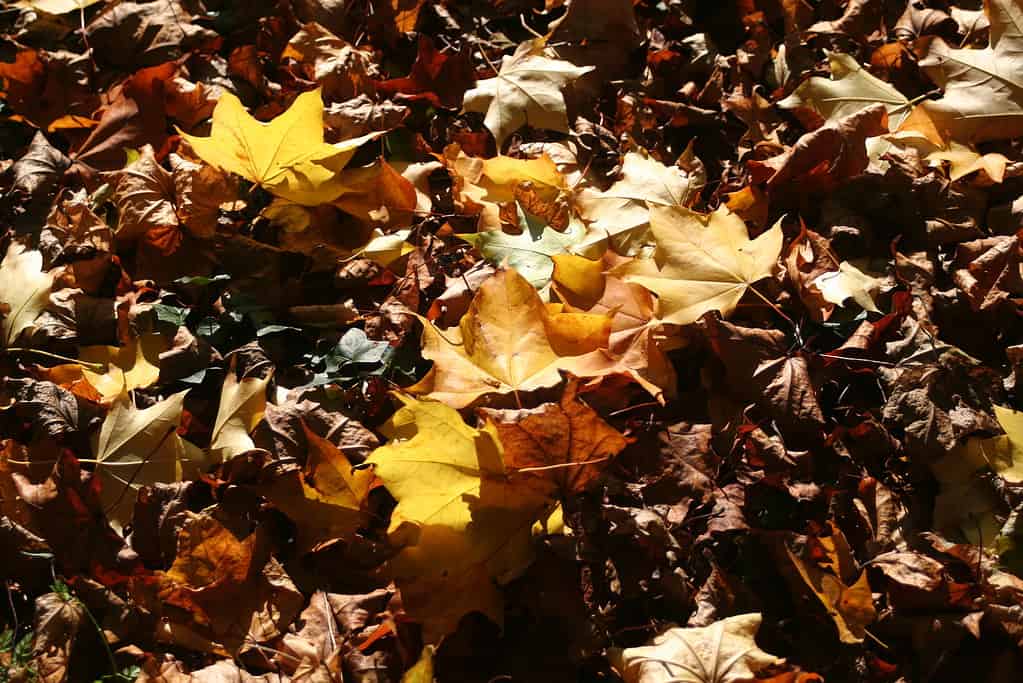
Shredded leaves are one type of mulch that’s all-natural and provides valuable nutrients for soil.
Many use shredded leaves as mulch, as they decompress quickly and provide key nutrients to plants’ soil. Additionally, leaves are great for feeding earthworms and other microbes that add to a healthy ecosystem. Of course, there’s also the cost-benefit to using shredded leaves instead of store-bought mulch.
While dyed mulch is a popular option on the market, it isn’t conducive to a nutrient-dense, healthy environment for your plants — or for humans and pets. There are many other appealing and natural alternatives to colorful mulch that will better support your landscaping.
The photo featured at the top of this post is © iStock.com/witmerphotography
Thank you for reading! Have some feedback for us? Contact the AZ Animals editorial team.







